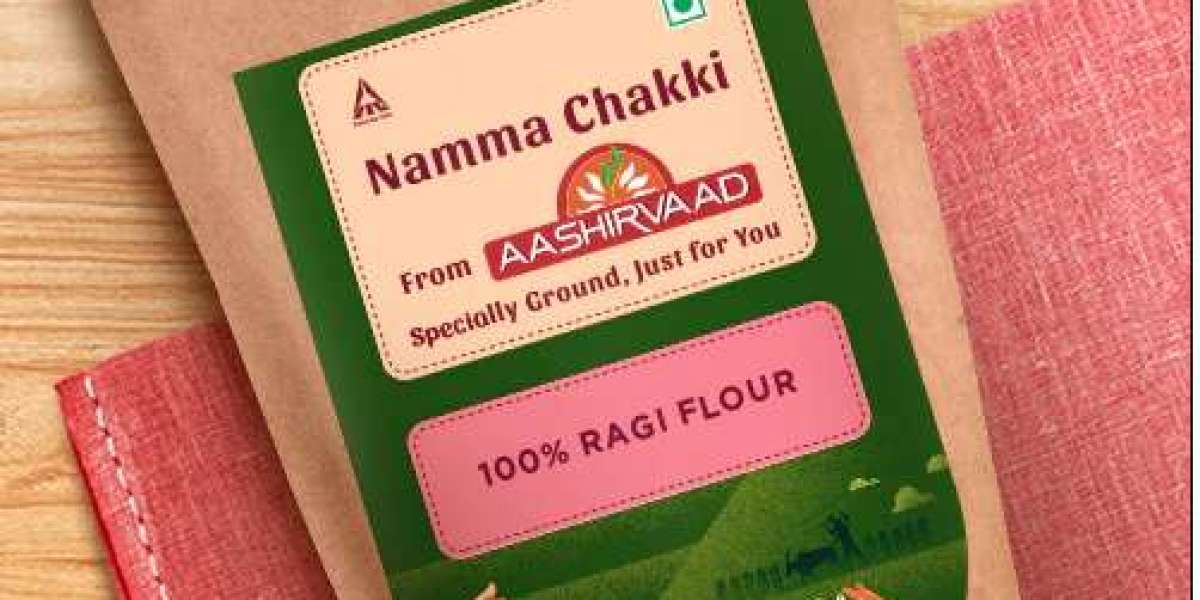In the ever-evolving landscape of healthy eating, one superfood that has garnered immense attention for its nutritional prowess is ragi flour. Also known as finger millet, ragi has transcended regional cuisines to become a global sensation, celebrated for its numerous health benefits.
In this culinary journey, we will explore the multifaceted advantages of ragi flour, dive into delectable ragi atta recipes that elevate its culinary status, and uncover how this humble grain is transforming kitchens into hubs of both health and gastronomic delight.
Unlocking the Nutritional Vault of Ragi Flour:
1. Rich in Calcium: Ragi flour stands tall as a calcium powerhouse, making it a vital component for bone health and development. This is particularly beneficial for individuals who are lactose intolerant or have restricted dairy consumption.
2. High in Fiber: The high fiber content in ragi aids in digestion, promotes a feeling of fullness, and regulates blood sugar levels. This makes it an excellent choice for those seeking weight management and improved gut health.
3. Packed with Essential Amino Acids: Ragi is a rare plant source that contains all essential amino acids, contributing to the building blocks of protein. This makes it an invaluable addition to vegetarian and vegan diets.
4. Abundant in Antioxidants: The presence of antioxidants in ragi helps combat oxidative stress, contributing to overall well-being and potentially reducing the risk of chronic diseases.
5. Low Glycemic Index: Ragi flour has a low glycemic index, leading to a gradual rise in blood sugar levels. This property makes it a suitable choice for individuals with diabetes and those aiming to manage blood sugar.
6. Gluten-Free Goodness: Ragi is naturally gluten-free, making it a safe and nutritious option for those with gluten sensitivities or celiac disease.
Ragi Flour Recipes: A Gastronomic Symphony
1. Ragi Mudde (Ragi Ball): A traditional Karnataka dish, ragi mudde is a simple yet nutritious preparation. Mix ragi flour with water to form a dough, shape it into balls, and serve with sambar or a spicy curry.
2. Ragi Roti: Combine ragi flour with wheat flour, add water and salt to form a dough, and then roll out into thin rotis. These can be paired with yogurt, chutney, or your favorite curry.
3. Ragi Porridge: A wholesome breakfast option, ragi porridge involves cooking ragi flour in water or milk until it thickens. Sweeten with honey or jaggery and add fruits or nuts for extra flavor.
4. Ragi Idli or Dosa: Mix ragi flour with rice and urad dal to create a batter for idlis or dosas. These savory delights are not only delicious but also packed with nutrition.
5. Ragi Ladoo: Blend ragi flour with jaggery, ghee, and nuts to form small, energy-packed ladoos. These make for a healthy snack or a delightful dessert.
6. Ragi Pancakes: Create a pancake batter using ragi flour, milk, eggs (or egg substitute), and a touch of sweetness. Cook on a griddle for a nutritious and delicious breakfast.
Incorporating Ragi Flour into Modern Cuisine
1. Smoothie Bowls: Enhance your morning smoothie bowl by incorporating a tablespoon of ragi flour. Its nutty flavor complements the fruity goodness, providing an extra nutrient boost.
2. Ragi Pasta: Mix ragi flour with whole wheat flour to create a hearty pasta dough. The resulting pasta not only has a delightful color but also offers a nutritional upgrade.
3. Ragi Bread: Experiment with homemade ragi bread by blending ragi flour into your regular bread recipe. Enjoy the unique taste and added nutritional benefits.
4. Ragi Cookies: Bake nutritious cookies by replacing a portion of regular flour with ragi flour. Add nuts, seeds, or dark chocolate for an indulgent yet healthy treat.
Culinary Bliss with Ragi Flour:
Ragi flour has transcended its traditional roots, seamlessly integrating into contemporary culinary landscapes. The unique nutty flavor and nutritional richness make it a versatile ingredient for those seeking a healthier lifestyle without compromising on taste.
Tips for Making the Most of Ragi Flour Benefits:
1. Balancing Flavors: Ragi has a distinctive taste that pairs well with both sweet and savory flavors. Experiment with various herbs, spices, and sweeteners to find your perfect combination.
2. Combining with Other Flours: Blend ragi flour with wheat, rice, or other gluten-free flours to create a more versatile and balanced texture in your recipes.
3. Adapting Recipes: Don't hesitate to adapt traditional recipes to include ragi flour. From bread to pizza crust, there's a place for ragi in almost every dish.
4. Storage: Store ragi flour in an airtight container in a cool, dry place to preserve its freshness and prevent it from developing a rancid taste.
Conclusion
As we journey through the myriad benefits and culinary possibilities of ragi flour, it becomes evident that this humble grain has carved a niche for itself in the world of healthy eating. Whether you're savoring traditional recipes or experimenting with contemporary creations, the versatility and nutritional richness of ragi flour make it a standout choice for those who value both health and gastronomic delight. So, let the culinary symphony of ragi flour play on, enriching your meals and elevating your well-being to new heights. To learn more visit the website.



